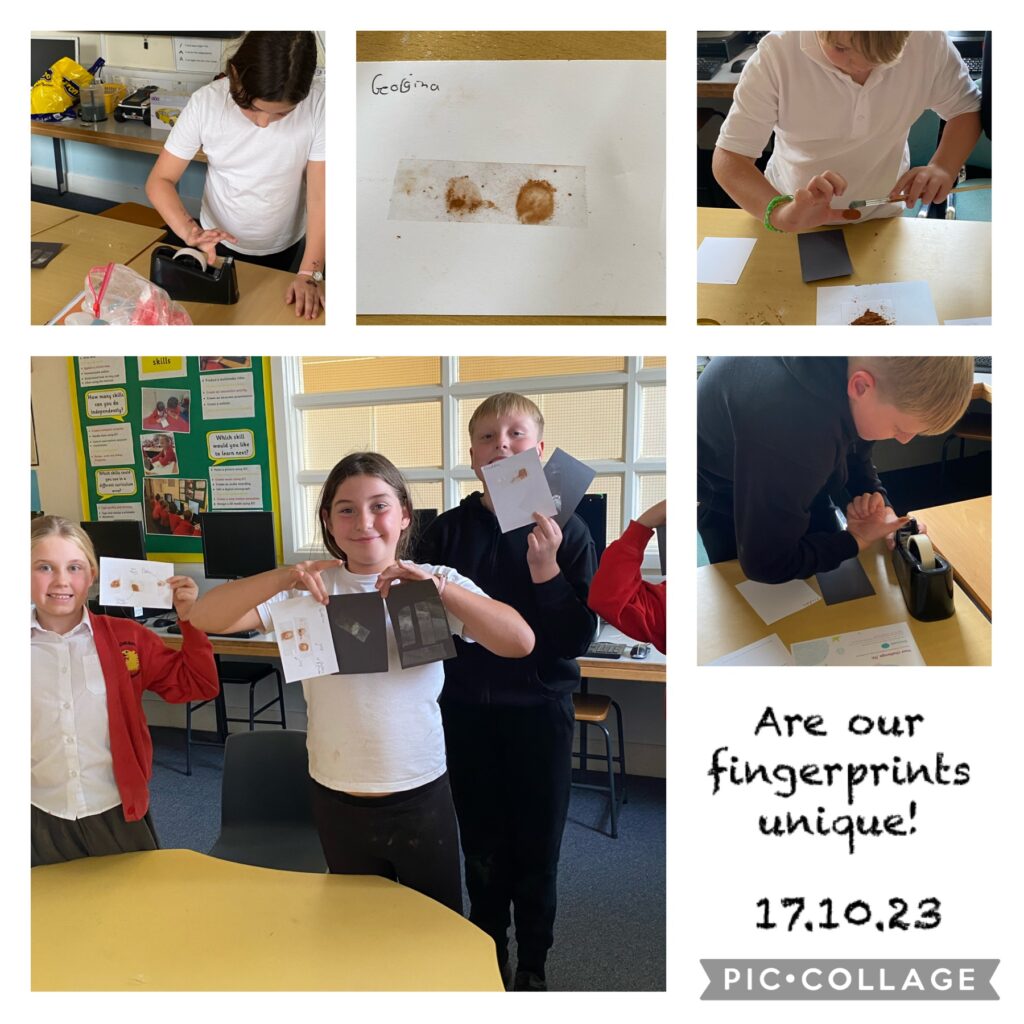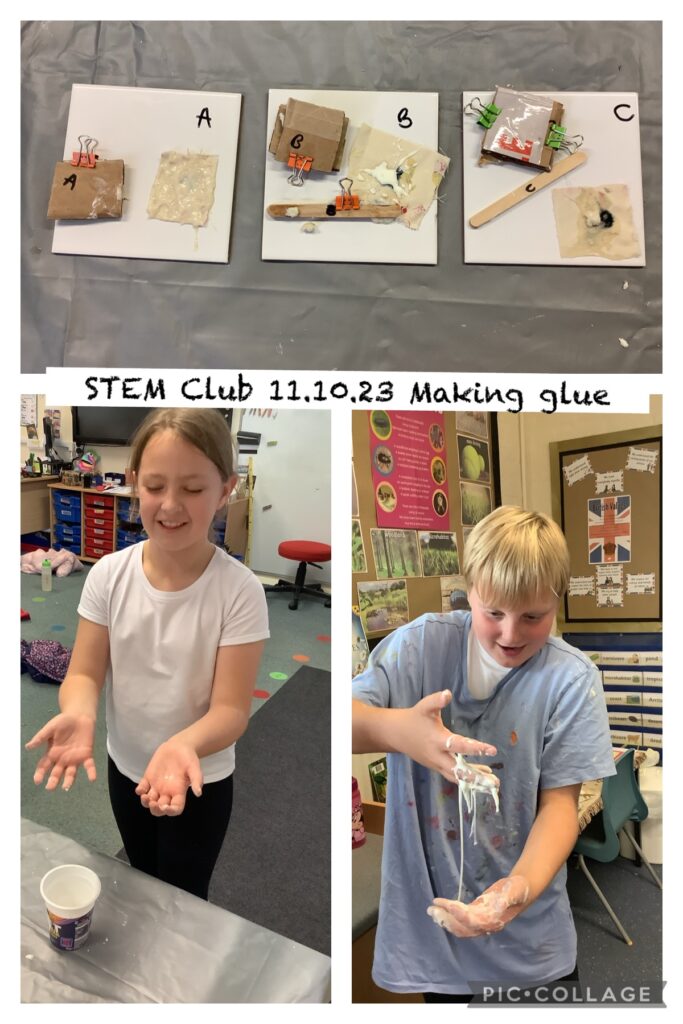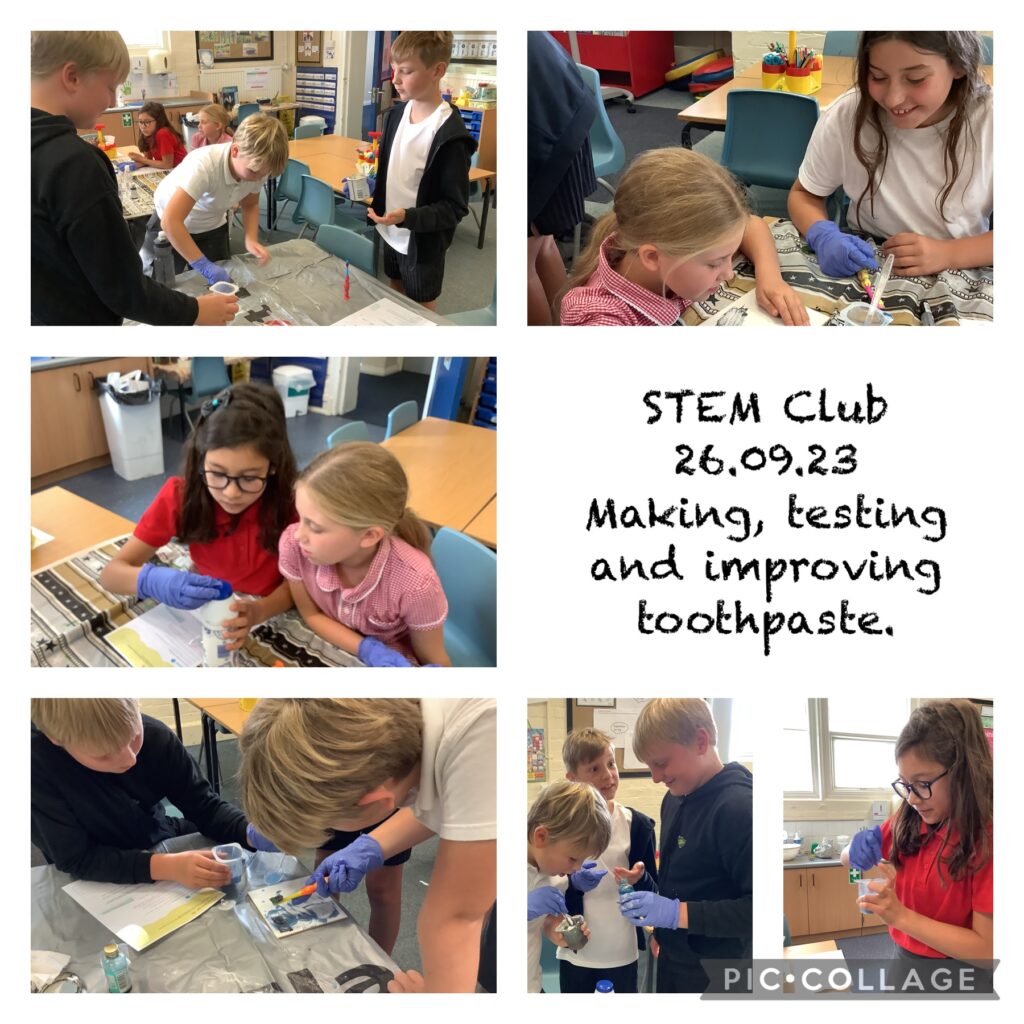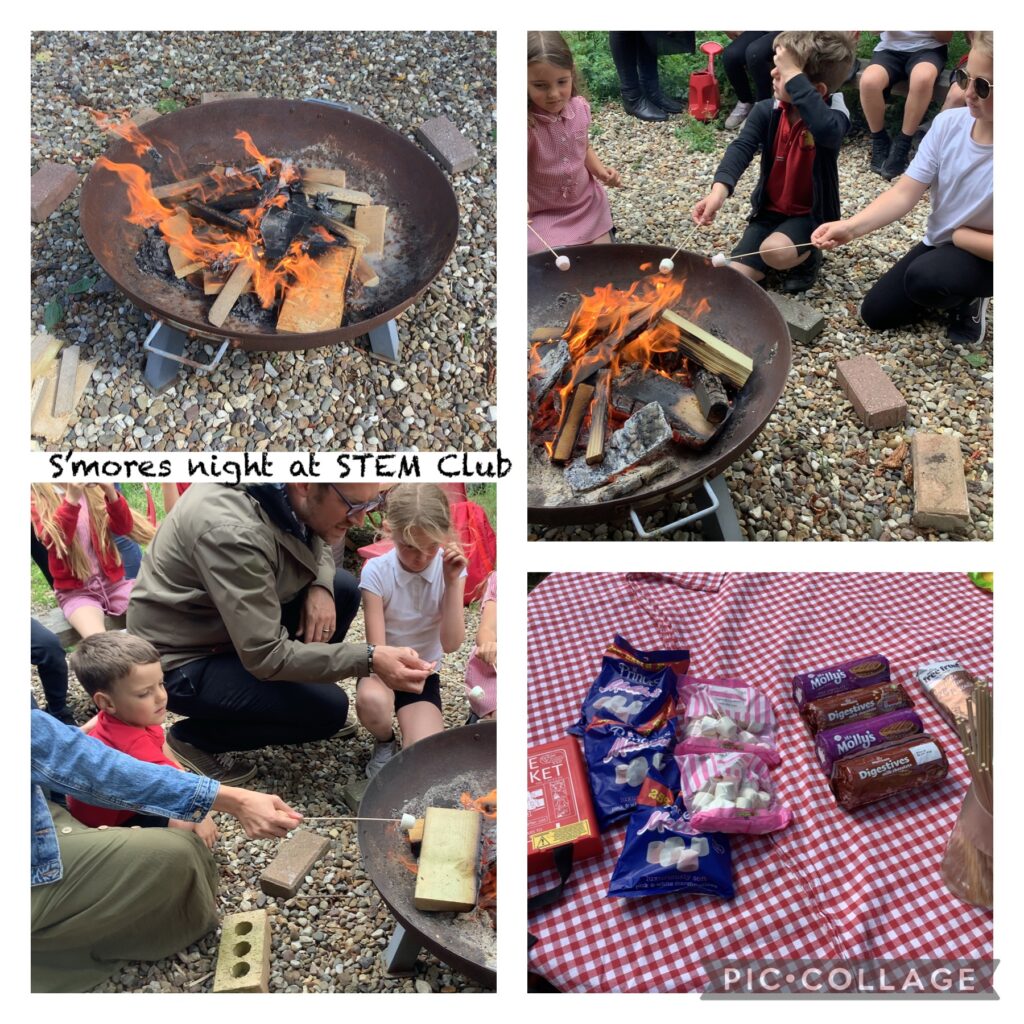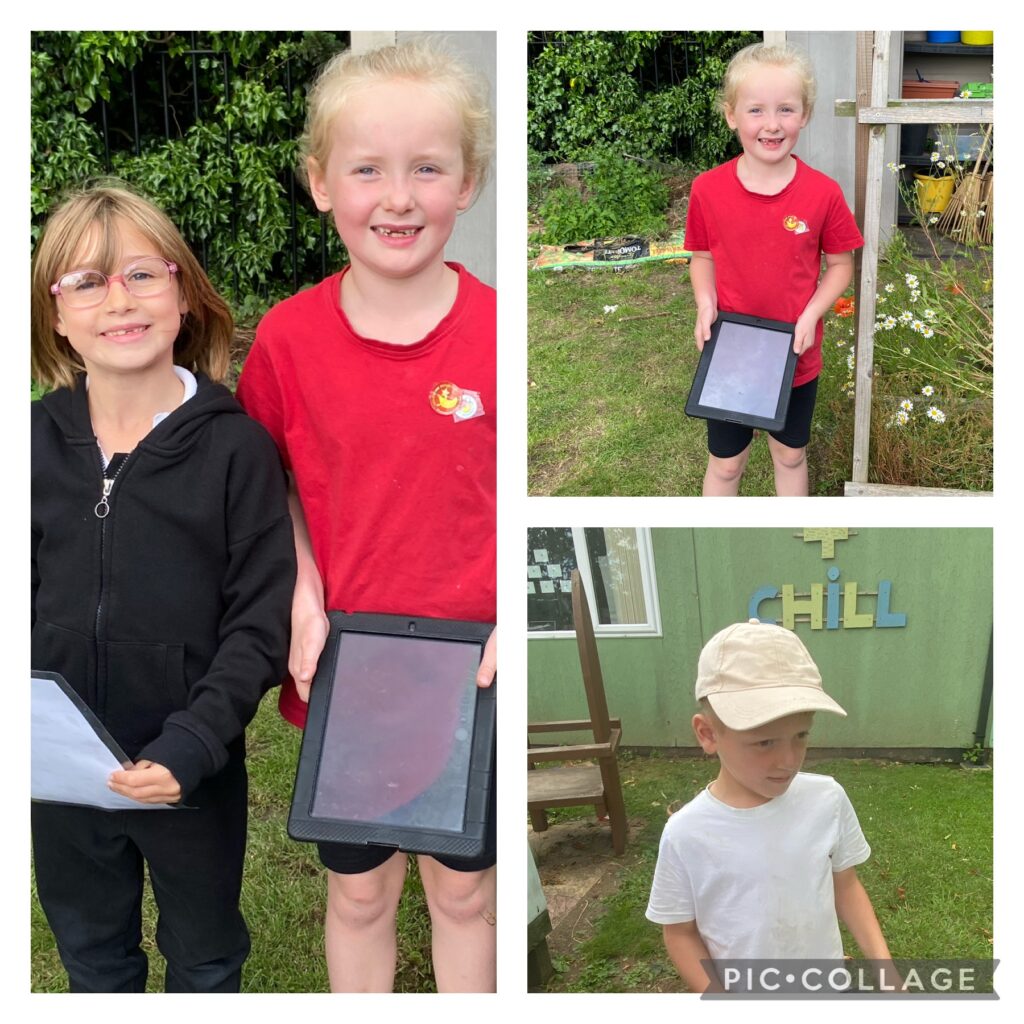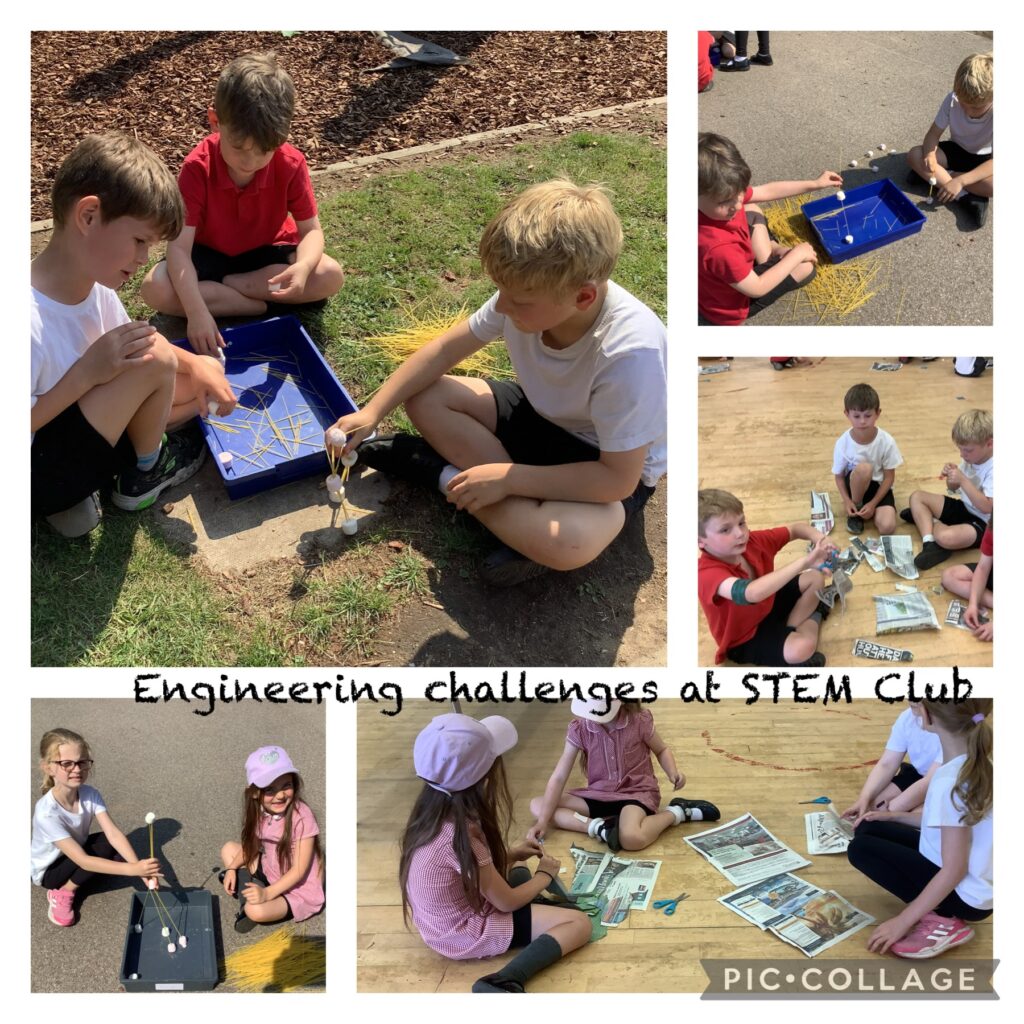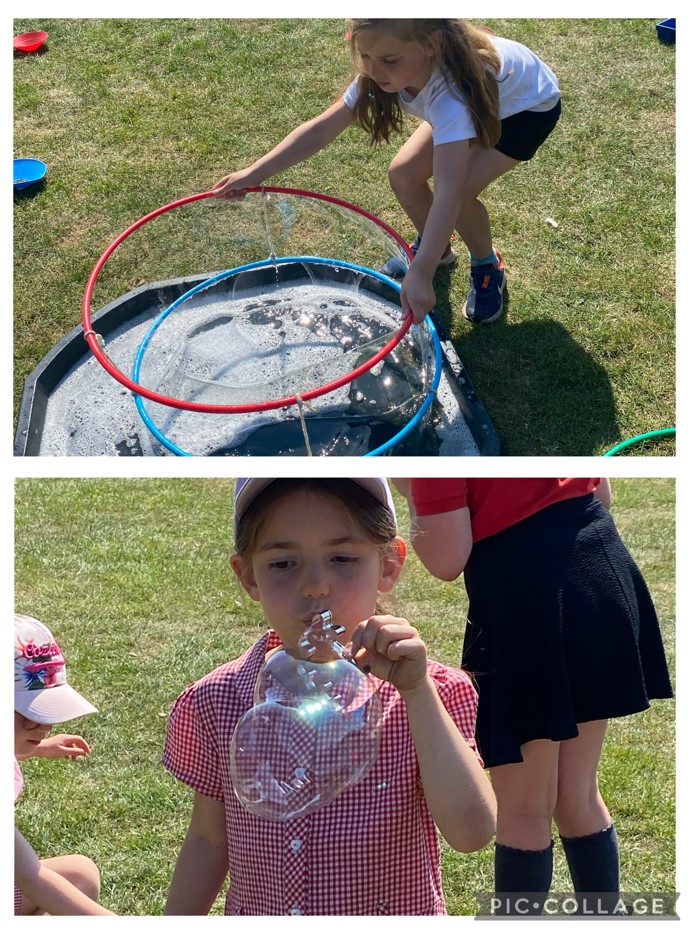At STEM Club this week we carried out two activities. Firstly we reviewed the different glues we made last week to determine which was the strongest and which would wash off clothing most easily. Having concluded which of our samples functioned the best, we turned to this week’s challenge.
We were investigating whether or not fingerprints are individual enough to be able to use them as a digital register or for example to withdraw books from a school library. The pupils had white and black card, cocoa powder, flour, sellotape and dusting brushes. They rolled their thumb in their choice of powder and transferred their print to sellotape and then onto card. It took a few goes to get clear prints.
Once they had done that, the pupils examined their prints against a set of fingerprint patterns to establish if they had arches, loops or whorls. They then compared all of their prints together to see if they were different to each other, Safe to say that the fingerprints of our STEM Club pupils are definitely individually unique!
